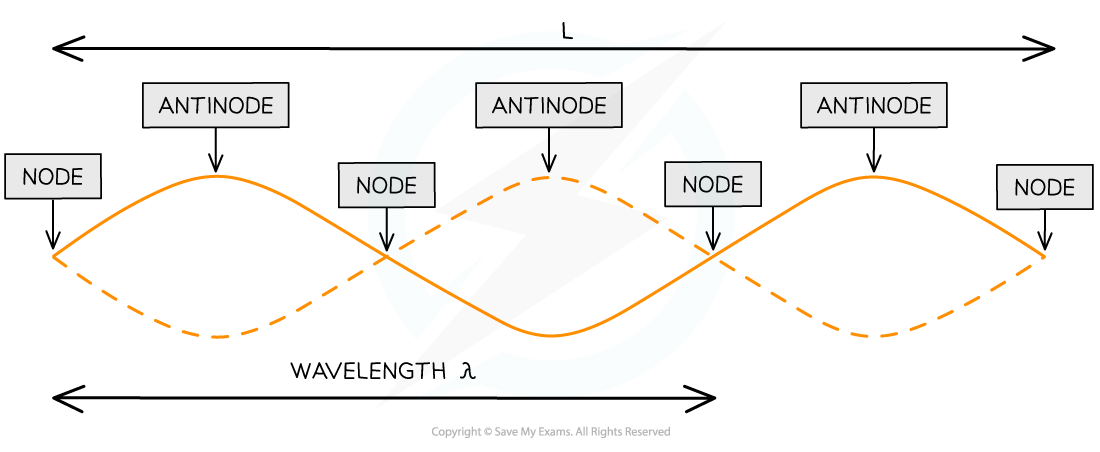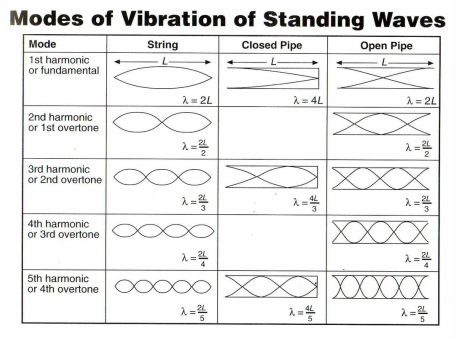C4 Standing Waves and Resonance
1/8
Earn XP
Description and Tags
Standing waves and Resonance
Name | Mastery | Learn | Test | Matching | Spaced |
|---|
No study sessions yet.
9 Terms
C4.1 Standing wave
Produced by 2 waves travelling in opposite direction along same line with same f superposing.
Waves must have same λ and similar A.
They store energy (stationarily), rather than transferring like travelling/progressive waves
Each point on wave oscillates at diffferent speed, overall stationary.
Each point has different A depending on # of superposition herre
C4.2 Node- Antinode
Node: A=0, separated by λ/2 : destructive interference: cancel
Antinode: A=max, also sep. by λ/2: constructive inter.: added A’ds
Fixed positions, only move up down (vertical), dont move along wave

C4.3 Phase on standing wave
In phase: even nr of nodes between - within 1 loop
Anti phase/out of: odd nr of nodes between
C4.4 Boundaries
Form on strings, in pipes:
nr of nodes depends on: f of producing wave, boundary conditions:
- 2 fixed ends, 2 loose ends, 1free1loose ends
At open end: always antinode
Closed end: alway node
Pipe: longitudinal waves when blowing in an open end; can be 2 fixed ends, 2 loose ends, 1free1loose ends
Guitar: 2x fixed
fixfix: At natural frequency: nλ/2 nodes; nλ/4 full waves.
C4.5 Open closed pipe λ
NOT IN FORMULA BOOKLET — REMEMBERRRR!!!!!
Open-closed: λ = 4L/n - n=1,3,5… (n=nr of nodes=harm)
Open-open: λ = 2L/n - n=1,2,3…(n=nr of nodes = harmonic)
Closed-closed; λ = 2L/n - n=1,2,3… (n=nr of rondjes=harm)
v = fλ

C4.6 Free oscillations vs forced
Free: no transfer of energy to/from surrounding; no external forces on it, vibrates naturally, only internal forces. Free vibration always oscillates at natural/resonant frequency.
Forced: to sustain oscillations in SHM; periodic F must be applied to replace lost energy in damping by resistive forces (friction, drag). Driving force can change frequency of oscillator.
C4.7 Resonance
driving frequency: f - forced
natural frequenct: fo - f os oscillation when oscillating freely
Resonance = f = fo → maximum amplitude
C4.8 Damping
Eventually, after driving force stops, all oscillators stop oscillating, as they are damped by external F (drag-friction) acting opposite to motion, reducing the Ek of the oscillator, and turning it into heat
Their amplitudes are decreased, until oscilator is at rest at equilibirum. f and λ are not changing!!
C4.9 Types of damping
Light damping: gradual, exponential decay of A, makes oscill.
Critical damping: return to rest in shortest possible time, no oscillation;
Heavy damping: large resitance; takes ages to go to x=0; door damp
